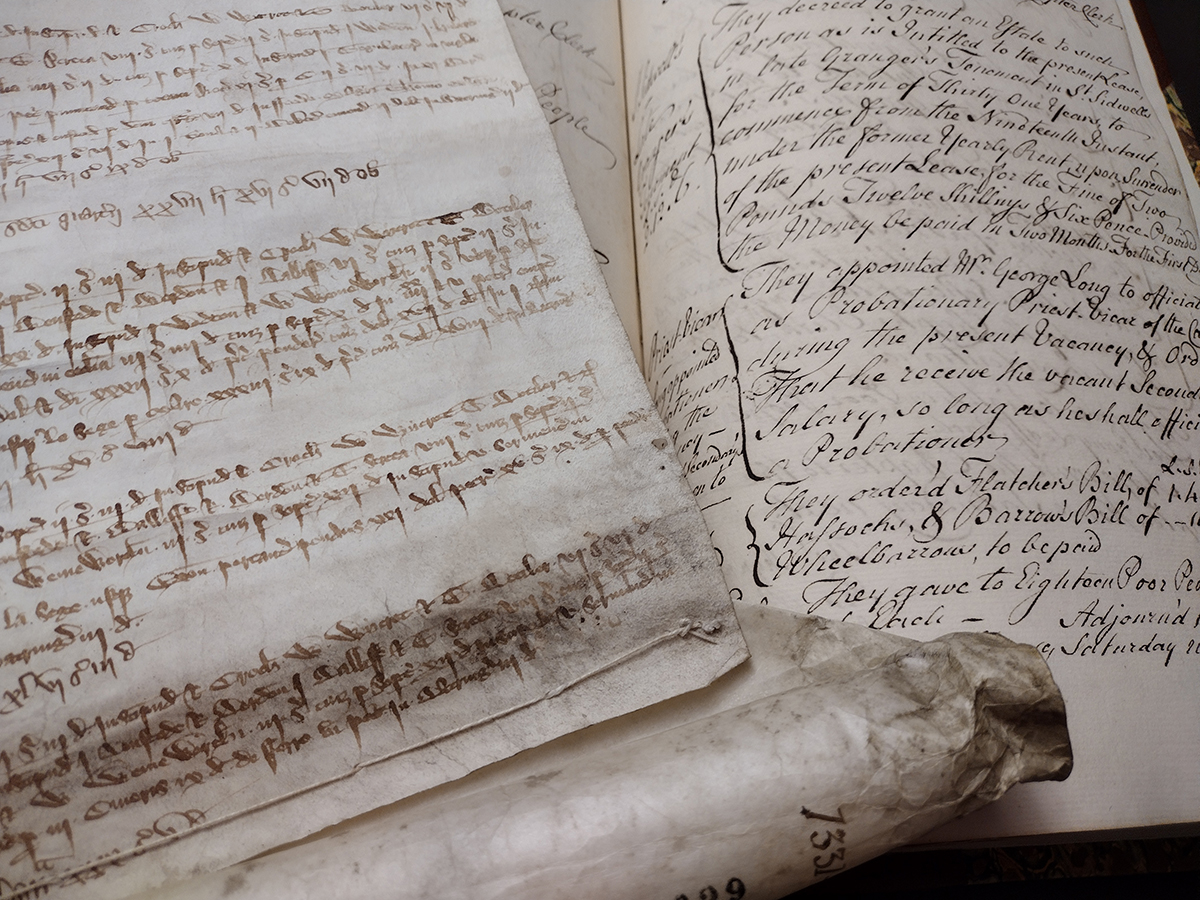 By Ellie Jones, Cathedral Archivist
By Ellie Jones, Cathedral Archivist
Wheelbarrows are so ordinary that most people probably don’t give them much thought. They crop up so often in certain records in the Exeter Cathedral Archives, however, that we began to wonder about them…
Between 1675 and 1803, the Dean & Chapter bought at least a hundred wheelbarrows. William Barrell (who also supplied stone to the Cathedral) was paid an average of 5s 6d each for more than 30 of them in the 1770s and 1780s. Perhaps that is why, at the Chapter meeting on 28 October 1775 (shown here) his name is wrongly recorded as William “Barrow”, not Barrell! The records from the weekly meetings of Chapter tell us that these wheelbarrows were bought primarily for the use of the scavengers on the Close and in St Sidwell’s, who were employed to clean up waste, recovering discarded materials for re-use, recycling, or for sale.
A few centuries earlier, when wheelbarrows seem to have been a relatively new innovation in Europe, they were being used during the construction of Exeter Cathedral. The earliest surviving evidence for wheelbarrows comes from reliefs on tombs in China in the 2nd century but doesn’t appear in Europe until the 1170s – and then only in a small handful of sources. Between 1279 and 1350, the Cathedral’s Fabric Account rolls show that new barrows were bought or made on several occasions and cost between 1 ¼ d and 7d each. More often, though, wooden barrows were being mended, often by hooping or binding in iron. Three weeks after Easter 1332 (shown here) 9d was spent “in wages of a smith for making ironwork for three wheelbarrows from St Peter’s iron”. The Latin word for wheelbarrow used throughout these accounts is “civera”, but once, in 1349, an English term is used, when three “barrewys” were bought for moving stone.
Next time you see someone pushing a load in a wheelbarrow, or wobble down the garden path with one yourself, pause and appreciate the fine bit of timeless engineering that is the wheelbarrow.